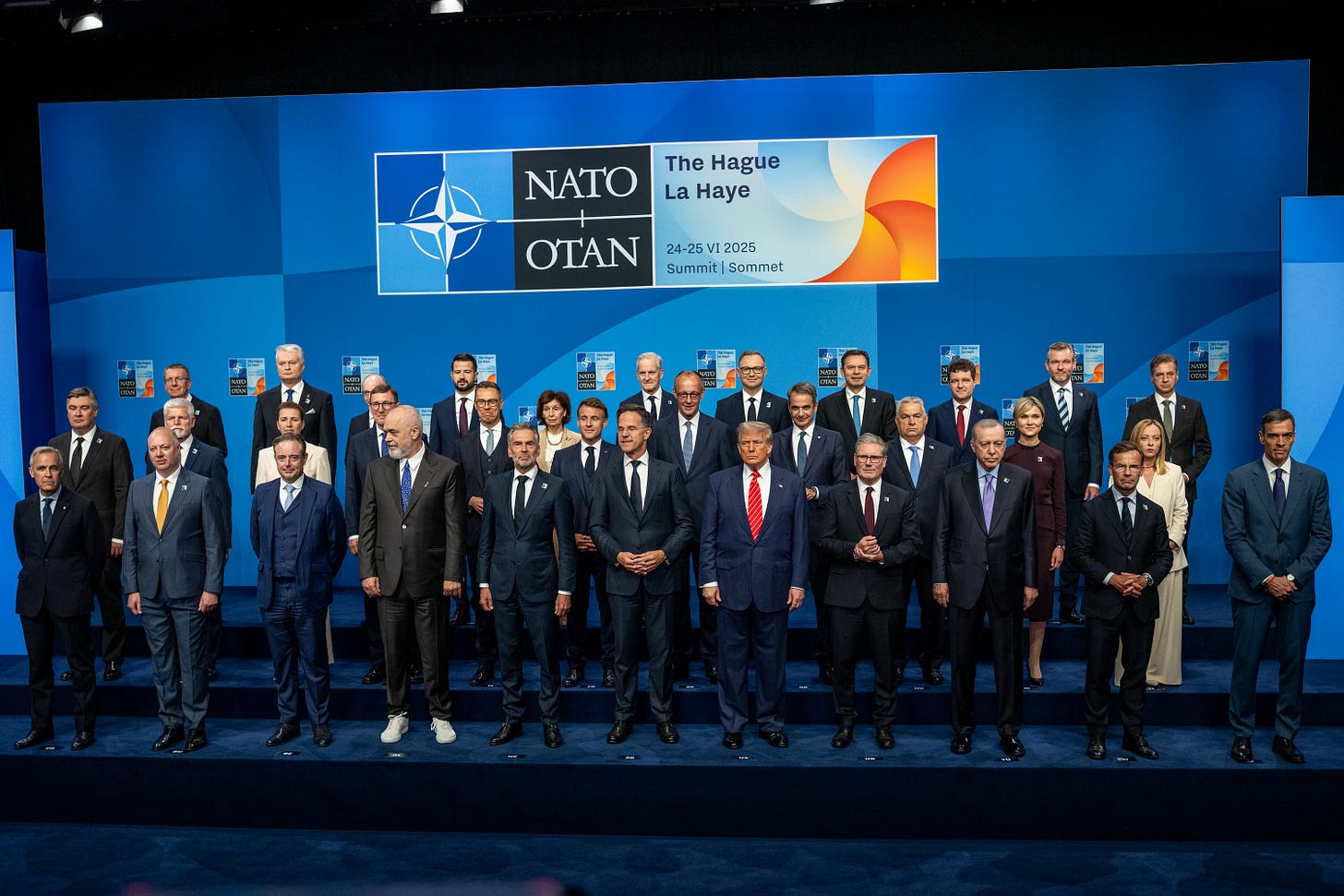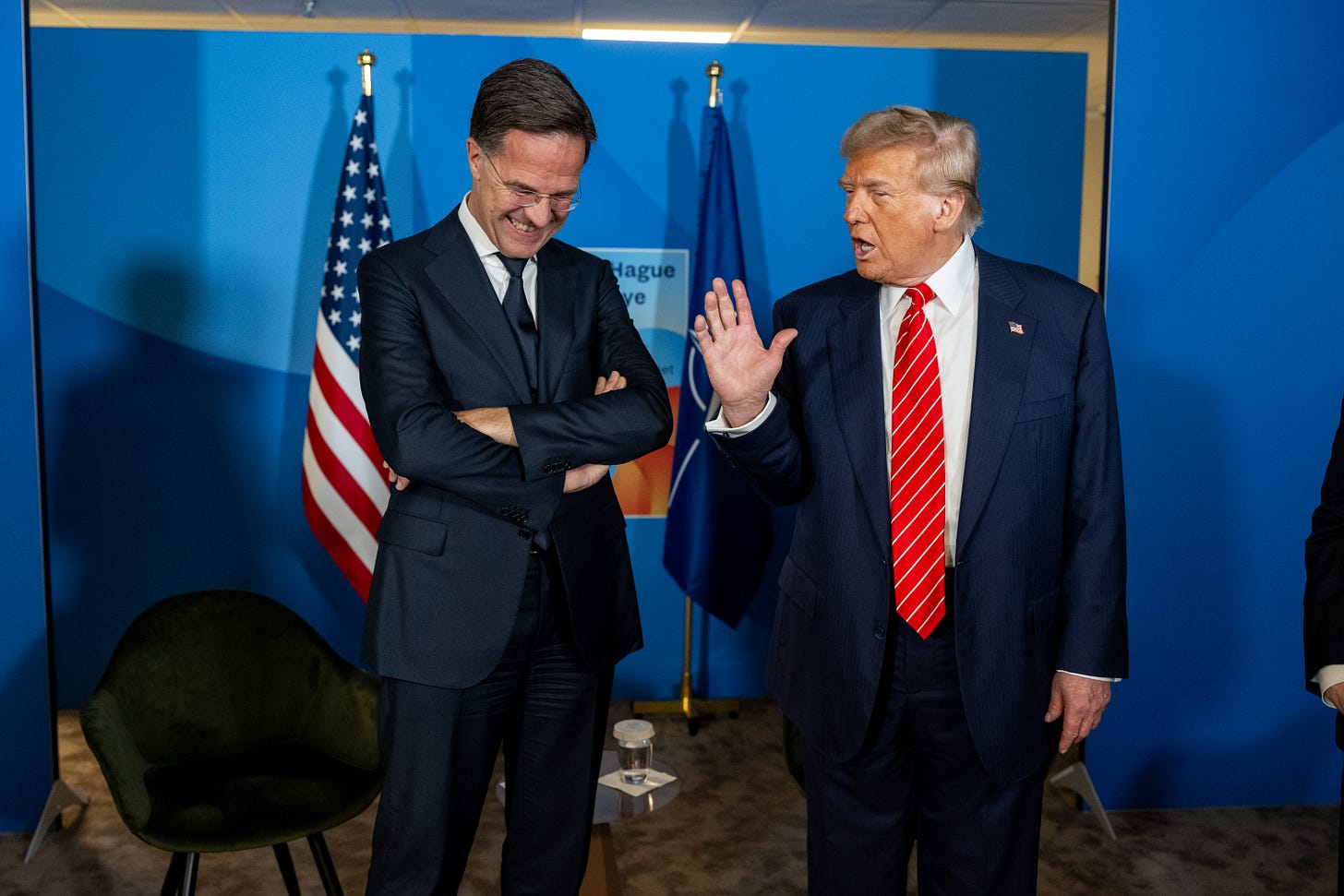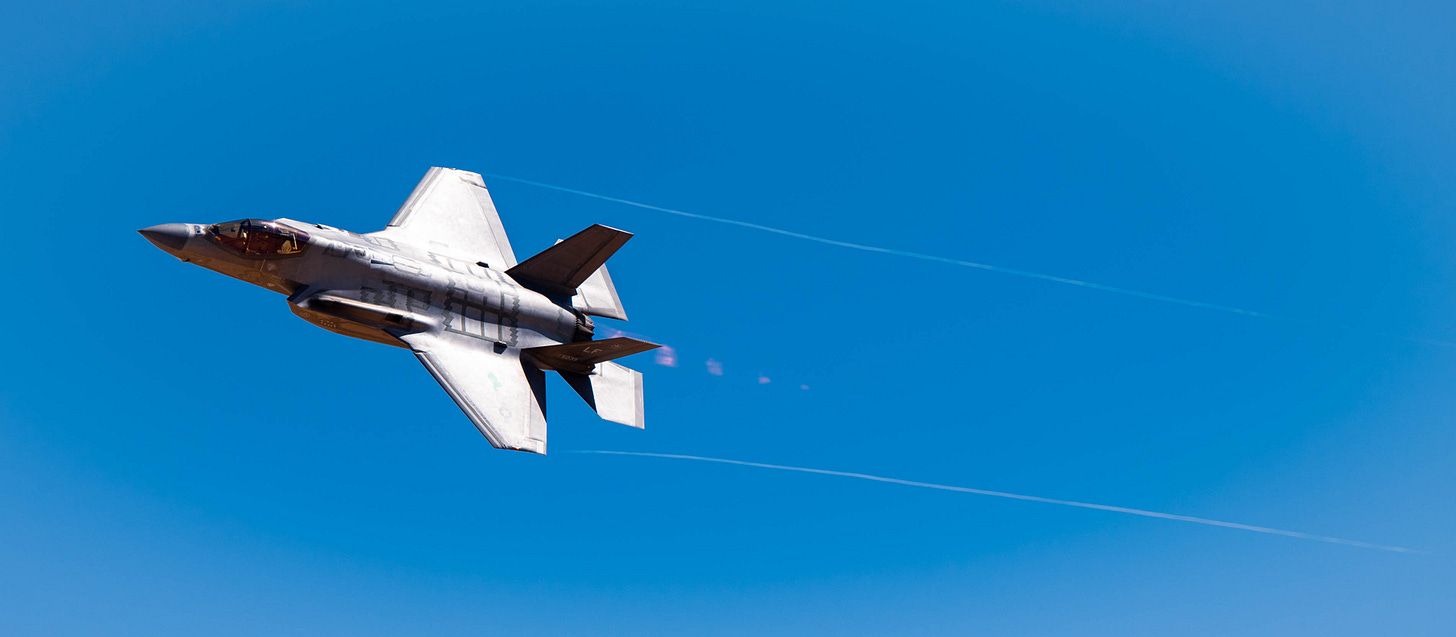NATO Announces Massive Increase in Military Spending
Under the new plan, the military spending targets of NATO members would more than double as the alliance seeks to increase both the size of its armies and expand on critical infrastructure

The NATO Summit was held on 24-25 June in The Hague. At the summit, the 32-member military alliance which includes Canada, the U.S., and most European countries agreed to a major increase in military spending that would take effect over the next decade. The Canadian military currently includes around 68,000 soldiers and 22,000 reservists. Around 1,900 are currently deployed in Latvia in case Russia attacks the country.
Under the current plan, NATO members will spend an equivalent of five per cent of their GDP on the military. 3.5 per cent of this spending would be on “core” military spending, including, for example, equipment, training, and personnel. The remaining 1.5 per cent would be on “defence-related infrastructure” which includes areas like ports and airstrips. This is a substantial increase from NATO’s previous goal of two per cent of GDP spent on defence. NATO members are aiming to hit this spending level by 2035. In total, this would increase the amount of money NATO members spend on the military by $700 billion. The spending target, which is the largest since WWII, will be reviewed in 2029 to determine whether any changes are needed.
NATO Secretary-General Mark Rutte called the planned spending a “quantum leap” in defence and said it would both improve security and provide jobs. NATO has been looking for more spending from its members for years as many lagged to hit the previous two per cent target. Estonia, Poland, Latvia, and Greece have greatly exceeded that target already as these countries are increasing their military budgets in response to Russia’s invasion of Ukraine. That war and threats from the U.S. that it might not defend members if they did not increase military spending have spurred massive jumps in military budgets.
For Canada, this would mean spending around $107 billion on “core” military needs and a further $43 billion on infrastructure. In June, Canada announced that it was increasing its defence budget by $9.3 billion to meet the previous NATO spending target of two per cent. Most of this money was intended to increase recruitment, increase soldiers’ pay, and begin procurement work for new equipment. Like most NATO members, Canada lagged behind the spending target for years, and former Prime Minister Justin Trudeau had hoped to hit two per cent of GDP by the end of the decade.
All NATO members committed to the new target except for Spain. Spain resisted the increased spending, and Prime Minister Pedro Sánchez said in a letter to Rutte that spending five per cent of its GDP on the military “would not only be unreasonable, but also counterproductive”. He also called the target “incompatible with our worldview”. Sanchez said Spain could meet all its NATO commitments by spending to just 2.1 per cent. Spain is the lowest spender in NATO per capita, with its 2024 military budget reaching just 1.28 per cent of its GDP.
Spain said it made a deal with NATO to be excluded from the new target. However, U.S. President Donald Trump said Spain will see a tough trade deal as a result of the country’s refusal to meet the target. Spain is a member of the European Union and trade deals are made through that bloc, so it is unclear how Trump plans to specifically target the country.
“We’re negotiating with Spain on a trade deal and we’re going to make them pay twice as much—and I’m actually serious about that,” said Trump.
Spending Increase Demanded by U.S.
The spending increase comes at the behest of the U.S. which has been calling for more spending among its members for years. The U.S. has the largest military budget in the world, and it is set to exceed USD $1 trillion in 2026. Currently, the U.S. military budget is worth around 3.4 per cent of its GDP. To hit five per cent, the U.S. would have to spend around $1.4 trillion on its military.
Trump has been pushing NATO members to increase spending since his first term. At the time, he refused to affirm that the U.S. would honour Article 5 of the North Atlantic Treaty, which states that an attack on one member would be seen as an attack on all members. At the summit in June 2025, Trump said that he supports Article 5 and would come to the defence of any member who invoked it.
“For too long, one ally, the United States, carried too much of the burden of that commitment—and that changes today,” Rutte said at the summit. “President Trump, dear Donald, you made this change possible. Your leadership on this has already produced one trillion dollars in extra spending from European allies since 2016. And the decisions today will produce trillions more for our common defence.”

Despite this, U.S. president Trump says the U.S. does not need to hit the new NATO target as the U.S. has “been supporting NATO so long”. It would cost the U.S. another $400 billion to hit the five per cent target, which several members of Congress are calling for.
Major Expenditures Ahead for Canada
The increased target means Canada’s military spending will rise even more. Canada spent around $41 billion on the military in 2024, and in early June Prime Minister Mark Carney announced that spending was increasing by $9.3 billion to hit the two per cent target.
According to a report from the C.D. Howe Institute, hitting the five per cent target will increase the average annual deficit by $77.7 billion over the next four years. This year, the deficit would hit $92 billion, a substantial increase from the 2023-2024 fiscal year, when it was $61.9 billion.
It is unclear how Canada intends to raise the funds necessary to pay for the substantial military increase. The government has ruled out tax increases—in fact, a new tax cut came into effect on July 1 that will cost the government around $27 billion over the next five years. The government is planning huge cuts to government operations to “improve efficiency” which could amount to $13 billion being cut from non-defence departments.
“The investments we’re making in defence and security, broader security, given the new threats that Canada faces, we’re not at a trade-off, we’re not at sacrifices in order to do those, these will be net additive,” Carney said at a press conference during the summit.
Carney added that the government needs to establish the political and “social licence” for the increased spending—convincing Canadians that the increase is needed. Two-thirds of Canadians support hitting the two per cent spending target, and a similar number feel that the five per cent target is too high. Conservatives support increasing military spending the most, while NDP voters are the most likely group to oppose the increases.
The federal government says there are reasons to greatly increase Canada’s military budget beyond the desire to meet the NATO target. Much of Canada’s equipment is old and outdated, especially in the navy and air force. According to an internal report from the Department of National Defence in 2024, just 58 per cent of the military would be able to immediately respond to a conflict like Article 5 being invoked. According to that report, nearly half the military’s equipment is “unavailable and unserviceable”, including 55 per cent of air force equipment, 54 per cent of naval equipment, and 46 per cent of army equipment. The report also said the military is short 15,780 members and is in need of more ammunition.
The Canadian Air Force has been looking at ways to modernize its equipment for a long time. Specifically, the air force has been planning to buy 88 F-35s to replace its aging CF-18s and FA-18s, which have been in service since the 1980s. However, the F-35 development program has been plagued by delays, accidents, and cost overruns and is severely overdue. Originally, the planes were going to cost Canada $19 billion. Now, the projected cost has risen to $33.2 billion. Canada has already paid for 16 F-35s, which are expected to be delivered next year.

Canada has been looking at other planes to modernize the air force instead of F-35s. The leading candidates are the Swedish JAS 39 Gripen and French Dassault Rafale, which are both older designs than the F-35. However, it would cost Canada a lot to suddenly pull out of the F-35 purchase, especially for the 16 paid-for planes. Both planes are very complex and different than the F-35, so having a mixed fleet would require additional spare parts and maintenance work, which would be far more expensive than using a single plane model.
The other area Canada is looking to immediately address in the military is submarines. Canada has four Victoria-class submarines which were purchased from the U.K. in the 1990s and have been beset by electrical and mechanical problems. In 2024, the federal government has set a goal of signing a contract for 12 new submarines by 2028. Both European and South Korean shipbuilders have been pitching their models to the Canadian navy.
Canada is also looking at the arctic as a region in need of more spending. The federal government announced that it plans to spend up to $6 billion on developing an over-the-horizon radar system that would be able to detect missiles, planes, and other devices coming over the North Pole, presumably from Russia. Canada is partnering with Australia to build the system.
These are projects the federal government has been involved in for years and they predate the new NATO spending target. The federal government has yet to specify how else they plan to spend $150 billion annually on the military.
Money Needed to Face “Global Threats”
“The long-held view that Canada’s geographic location will protect us is becoming increasingly archaic,” Carney said when the government announced that it was accelerating plans to hit the two per cent target. “Threats which felt far away and remote are now immediate and acute.”
One of the main reasons NATO cites for increasing spending is to meet threats from Russia and China. The Russian invasion of Ukraine in 2022 spurred several NATO members like Poland and Estonia to grow their military budgets far beyond the two per cent target. Poland has spent so much it has almost hit the five per cent target already.
Canada, like most NATO members, has actively supported Ukraine during the war, which is ongoing. Canada has given Ukraine nearly $20 billion in military aid as of February 2025, and in June announced that it was sending another $25.5 million worth, most of which will be armoured vehicles.
Rutte says that Russia could be ready to attack NATO within five years, as soon as it finishes the War in Ukraine, which is why he says increased spending is vital. The head of the German military, Carsten Breuer, also said Russia could attack NATO members in Europe by 2029. Neither they nor any other NATO country has offered any evidence supporting the claim that Russia is planning to launch a broader war apart from Russia’s considerable tank production increases. Russia has said that it is not planning to attack any country in NATO.
During the summit, Rutte also said the alliance should focus on China’s military buildup. China has been massively increasing the size of its navy in recent years, and the U.S. Department of Defense estimates that it will grow to 435 ships by 2030. It also launched its first domestically-built aircraft carrier, the Shandong, in 2024. China has also been growing its missile networks and designing hypersonic missiles which are virtually impossible to defend against. China has also been referring to itself as a “near-Arctic state” as it is looking at taking advantage of new shipping routes that are opening in the Arctic due to climate change.
NATO may also be concerned about the relative performance of its own equipment against Chinese weapons and vehicles. A brief conflict broke out between India and Pakistan in April 2025 following a terrorist attack in a tourist town in the disputed Kashmir region which left 25 Indians dead. India and Pakistan immediately began fighting, and the conflict lasted for just over two weeks until the U.S. brokered a ceasefire between the countries.
India deployed Rafale and Russian jets while Pakistan deployed J-10s and J-17s, which it produces jointly with China. While accurate information about the specifics of the conflict is hard to come by, it has been confirmed that the Pakistani jets performed well and brought down at least two Indian planes. Many American military analysts are concerned that the Chinese planes appear to be comparable with most Western-made ones and fear that the U.S. has lost its technical edge in warfare.
The government has been touting the economic benefits of the buildup, especially in terms of infrastructure investment. Carney has been saying that as much as possible, he plans to keep defence money in Canada by localizing manufacturing and supply chains. Currently, 75 per cent of Canada’s defence spending goes to the U.S., a dynamic Carney says he wants to change. Since the election, Carney has pitched defence spending as a way to protect Canadian sovereignty.
Increased military spending could be a way to get a better deal on trade, especially if Canada chooses to purchase American equipment like F-35s. Carney and Trump spoke at length about military issues and foreign policy when the Prime Minister visited Washington in April. With Trump threatening Spain for refusing to meet NATO’s target, it is possible that most NATO are meeting the U.S.’s demand to address this issue, rather than out of a desire to grow their militaries.
The federal government has promised to present a budget this fall that will likely include more information about how money will specifically be spent on the military.




